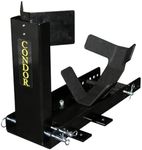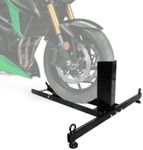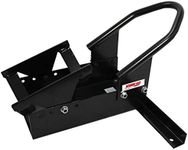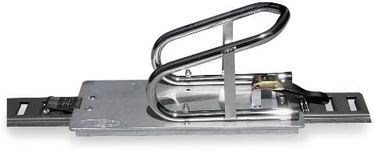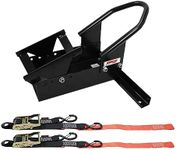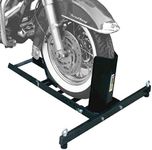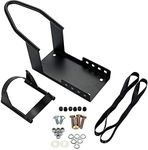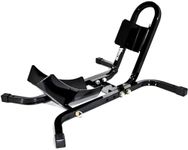Buying Guide for the Best Motorcycle Wheel Chocks
Choosing the right motorcycle wheel chock is important for safely securing your bike during transport, storage, or maintenance. A wheel chock holds the front or rear wheel in place, preventing the motorcycle from tipping over or rolling. When picking a wheel chock, you should consider where and how you plan to use it, the size and type of your motorcycle, and how often you’ll need to move or adjust the chock. Understanding the key features will help you select a chock that fits your needs and keeps your motorcycle stable and protected.Wheel Size CompatibilityWheel size compatibility refers to the range of tire diameters and widths that the chock can securely hold. This is important because a chock that is too small or too large for your motorcycle’s wheel won’t provide a stable fit, which can lead to accidents or damage. Wheel chocks are often divided into those designed for smaller wheels (like those on dirt bikes), standard motorcycle wheels, and larger cruiser or touring bike wheels. To pick the right one, check your motorcycle’s wheel size and make sure the chock is designed to accommodate it. If you have multiple bikes, look for a chock with adjustable settings to fit different wheel sizes.
Mounting TypeMounting type describes how the chock is installed or used. Some chocks are freestanding and can be placed anywhere, while others are designed to be bolted down to a trailer, garage floor, or truck bed for extra stability. Freestanding chocks are convenient for occasional use or moving between locations, but may not be as secure during transport. Bolted chocks offer maximum stability, especially when hauling your motorcycle. Consider how and where you’ll use the chock—if you need to transport your bike, a bolted chock is best; for garage storage or maintenance, a freestanding model may be more practical.
Material and Build QualityMaterial and build quality refer to what the chock is made of and how sturdy it is. Most chocks are made from steel or heavy-duty aluminum, which provide strength and durability. This is important because a weak or flimsy chock can bend or break, putting your motorcycle at risk. Steel chocks are generally heavier and more robust, suitable for larger bikes, while aluminum chocks are lighter and easier to move. Choose a chock with solid construction and a finish that resists rust, especially if you’ll use it outdoors or in damp environments.
Ease of UseEase of use covers how simple it is to load and unload your motorcycle from the chock. Some chocks have self-locking or automatic mechanisms that hold the wheel in place as soon as you roll the bike in, while others require manual adjustment or strapping. Self-locking chocks are convenient and save time, especially if you often work alone. If you prefer a hands-on approach or need extra security, a manual chock might be suitable. Think about how often you’ll use the chock and whether you’ll need to secure the bike by yourself.
PortabilityPortability refers to how easy it is to move or transport the chock. Some chocks are lightweight and foldable, making them easy to carry and store, while others are heavier and designed to stay in one place. If you need to use the chock in different locations or take it with you on trips, look for a portable design. For permanent setups in a garage or trailer, portability may be less important.


